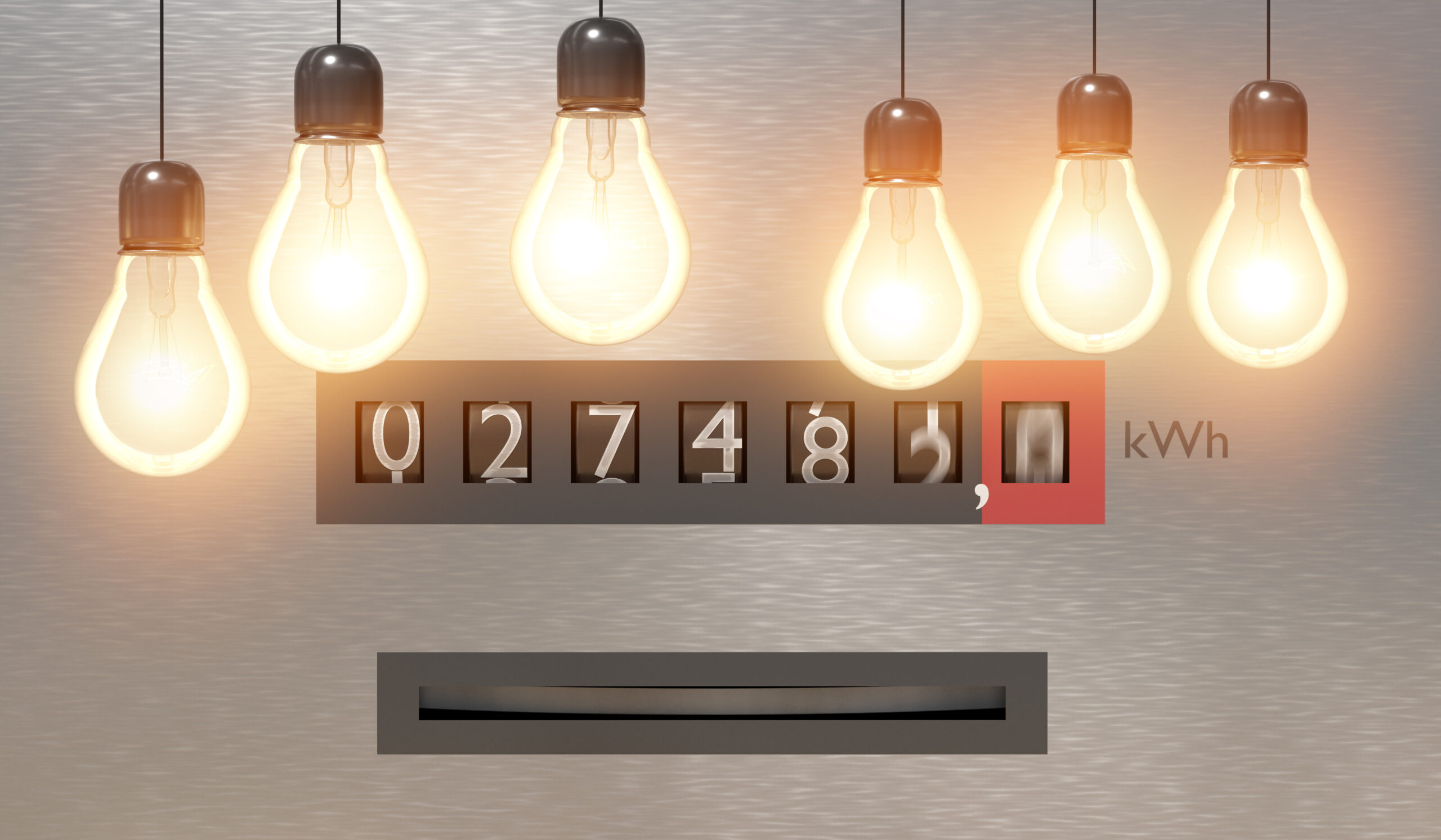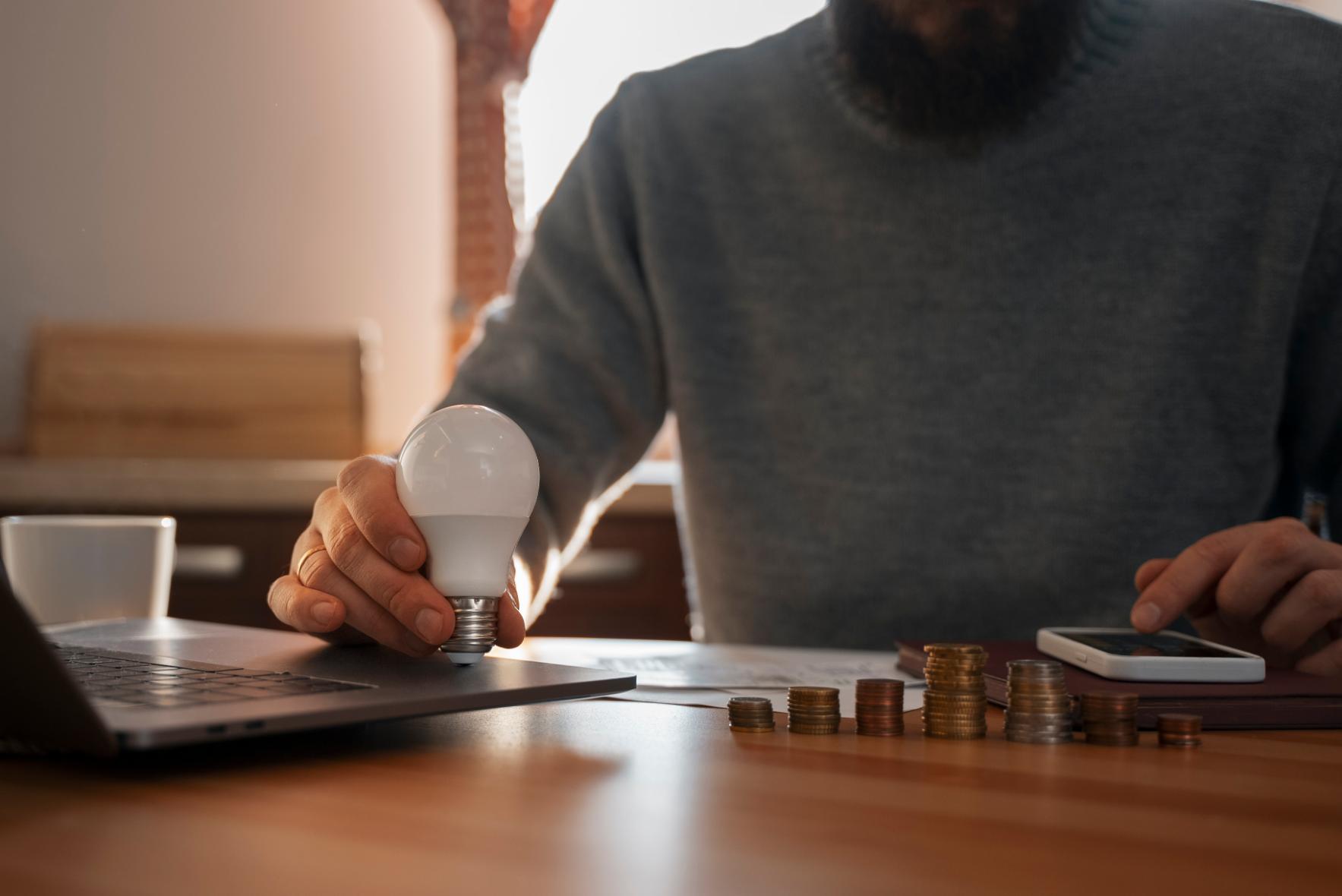Have you ever wondered if your electricity bill is too high? Are you paying more than your neighbours each quarter? With energy prices skyrocketing in recent months, chances are you have been thinking more about your costs than usual and wondering if there is a better, cheap electricity and gas plan out there for you.
This page will help you understand if you are paying too much for electricity, how to compare gas and electricity and what you can do to reduce your bill.
Contents
- What is the average electricity bill in Australia?
- How often do you pay electricity bills Australia?
- Impacts on electricity usage
- How do I use less electricity?
- How do I find a cheaper electricity plan?
What is the average electricity bill in Australia?
The national average electricity bill in Australia is $1,645 per year, as of December 2021. This average was calculated by the Australian Energy Market Commission (AEMC) in the Residential Electricity Price Trends report. A new report will be published in mid-2023 with updated data, following a tumultuous couple of years in the energy market.
To come up with this figure, they looked at the average number of kWh used by a household during the year and multiplied that amount by the cheap rate on offer in each state.
The average for each state is shown below.
| State | Average Annual Electricity Bill |
| Victoria | $1,290/year |
| New South Wales | $1,253/year |
| Queensland | $1,226/year |
| South Australia | $1,742/year |
| ACT | $2,004/year |
If you want to narrow it down even further, your electricity bill shows a comparison of electricity usage in your local area. An example of an EnergyAustralia bill is below, take a look at the bottom of the page for an energy comparison with your neighbours.

Source: EnergyAustralia – Understand your bill
How often do you pay electricity bills Australia?
While it doesn’t affect the total annual cost of energy, the average bill is affected by the choice to pay monthly or quarterly (every three months). Most Australian retailers give you the choice so you can choose the option that works best for your household budget.
For many customers, the idea of 12 smaller bills every year is more manageable. If you choose this option, it’s important to know that your bill will only be accurate if you have a smart meter. If you have an analogue meter, it will still only be read every three months, so your monthly bill will be estimated. Every quarterly bill will be accurate and you will receive an adjustment on your bills at that stage.
For Australians, the most common choice is quarterly billing, with around 70% of electricity accounts being billed quarterly. This is probably because most electricity retailers offer quarterly bills by default. Around 25% are billed monthly, with the remaining 5% opting for bi-monthly billing.
Based on the AEMC report, this is how much you can expect for an average monthly or quarterly bill in each state.
State | Average Quarterly Bill | Average Monthly Bill |
Victoria | $322.50 | $107.50 |
New South Wales | $313.25 | $104.50 |
Queensland | $306.50 | $102 |
South Australia | $435.50 | $145 |
ACT | $501 | $167 |
Impacts on electricity usage
As well as the state you live in, there are some other key factors that affect how much energy you use.
Age
The trends show that the older generations are much more frugal with their electricity, and whatever they’re doing, it’s working! Baby Boomers are paying on average $73 less each quarter, that’s a massive $292 saving each year.
| Generation | Average power bill (quarterly)* |
| Gen Z (age 18–24) | $356 |
| Gen Y (age 25–39) | $343 |
| Gen X (age 40–59) | $351 |
| Baby boomers (age 60+) | $283 |
Household size
Perhaps unsurprisingly, bigger households are spending more on their electricity. With heating and cooling making up 50% of an average bill, this is perhaps not to do with how many people are using energy, but rather with how many rooms need to be kept at the perfect temperature.
| Number of children | Average power bill (quarterly)* |
| 0 | $309 |
| 1 | $357 |
| 2 | $388 |
| 3 | $440 |
*Source: Finder Consumer Sentiment Tracker, August 2022.
Of course, the average spend for your state, age or household size isn’t prescriptive. There is no reason you can’t come in well below the average and put all those savings back in your pocket.
A two-pronged approach is the most effective way to reduce your energy bill: use less energy and pay less for what you use. Keep reading to find out how.
How do I use less electricity?
There are some changes you can make to your home and your energy usage habits to dramatically reduce how much you use each quarter.
Solar panels
This will have by far the biggest impact on how much energy you use from the grid as well as helping Australia work towards its renewable energy target, but it comes with a big start-up cost.
To install solar panels will cost around $6,500. This will vary depending on the size of the system you need and the solar company you choose. A very small, two-panel system can be as little as $2,500, while a large 10kW (27 panel) system can be as much as $13,000.
To make the most of the energy you produce, you will also need to install a solar battery with your PV solar panel system. This means you can store your excess energy through the day to use during the night when your panels have stopped generating, rather than having to switch to the grid. However, the upfront cost is again hefty, with a battery costing between $5,000 and $19,000 depending on the size.
You can offset some of these costs with government rebates and offers through retailers, such as a $2,000 discount on your battery when you join Origin Loop.
Many solar panel providers and energy retailers offer interest-free options to cover the upfront cost of your solar panel and battery installation. This means you can spread the cost over 60 months and because your energy bill will be reduced during this time, your quarterly expenses could balance out.
Timers
Using a timer to connect electric to your heavy-use items, rather than running them all day, can cut your energy usage by up to half.
Items to consider are your air conditioner, heating system, hot water, under-floor heating and pool pump. By setting these items to only run when necessary, you won’t be wasting electricity on things you don’t need.
Insulation
Protecting your home from the heat and cold will reduce your reliance on air conditioning and/or heaters.
Installing high-quality insulation in your roof, along with a whirlybird, will make a significant difference to the temperature variances inside your home.
You should also consider rugs to stop the cold coming up through the floors, and make sure window and door seals are in good working order.
Master powerboards
A master power board is used to plug in all nearby appliances so that you can easily turn them all off from a single switch. This will help to make sure all your electrical appliances are turned off overnight or when you are not using them, making you some big savings in the process.

How do I find a cheaper electricity plan?
When you switch electricity and gas plans, the first thing you look for is the lowest cost per kWh. However, there are other factors to consider when you’re moving home electricity to work out which will give you the cheap total bill.
Off-peak rates
An off-peak rate is a lower rate that retailers charge for energy used outside of peak times, as an incentive to use electricity when demand is low. If you can adapt your energy usage habits to make use of the off-peak rate, you will notice a big difference in your bill.
EnergyAustralia’s Balance Plan (ToU) offers customers in the CitiPower network an off-peak rate of 17.35c/kWh for electricity used between 12am – 3pm and 9pm – 12am every day, compared to the peak rate of 30.21c/kWh.
Controlled load tariff
A controlled load tariff is a lower rate for appliances connected to a separate meter. This is common for hot water systems and swimming pools.
Tango Energy’s Residential Plan (VDO with a dedicated circuit) offers a super low controlled load tariff of just 15.66c/kWh, almost half the peak rate of 30.21c/kWh for customers in the CitiPower network.
Discounts
Discounts can apply to your electricity usage charge or your total bill. For electricity rate discounts, retailers must show their offer in comparison to your state’s reference price, to make it easier for you to compare plans from different providers.
EnergyAustralia’s Flexi Plan includes a guaranteed 20% discount on your total electricity bill and 25% on gas, for a 12-month benefit period.
Special offers
Special offers are often limited-time or one-off deals, so it pays to compare your bill regularly to take advantage of what is available at that time. Several energy companies have partnerships with third parties to offer you discounts on a range of goods and services, which can help offset your bill.
CovaU’s Freedom Online Plan gives you access to their Rewards shop, where you can enjoy benefits from over 4,500 participating businesses. (Information correct in June 2023)
Solar rates
If you have made the plunge into solar, make sure you choose a plan that will maximise your return on investment.
For customers in the Canberra region, the ActewAGL Solar Saver Plan offers a huge 12c/kWh feed-in rate for the first 15kWh per day of excess energy you produce, then 8c/kWh thereafter. (Information correct in June 2023 for customers in the CitiPower network)
Bundles
Retailers who offer multiple services often give you a better rate for bundling two or more services with them, so if you connect electricity and gas plus high-speed NBN or a mobile plan, you’ll get rewarded.
Foxtel offers affordable NBN plans at $75 per month when you bundle it with an entertainment package. Several of their plans also include a Netflix subscription to increase your savings.

Next steps
If you’re paying more than the average for electricity for your household or small business, then you could be losing out on hundreds of dollars of savings each year. Call CheapBills on 1300 786 045 or enter your details online and our 100% free comparison tools will help you find the cheap electricity deal so you can start saving today!
Related post: Are Electricity Prices Going Up in 2023










